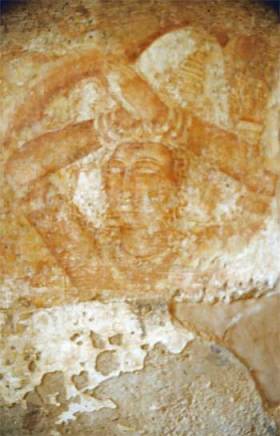Ego and Mindfulness, by Corrado Pensa
Posted on 7 May 2011 byBuddhism Now
I would like to consider the words of Buddhadhassa Bhikkhu when he said that many people suffer mental disorders, but a much more common disease is a spiritual disease which goes by the name of ‘me’ or ‘mine’. Most of us, it seems, need to work to be healed from this illness.
What is it, then, that we usually refer to in this way? What is it that we call ‘ego’, ‘me’, or ‘mine’? Ego is the totality of what is classically called ‘afflictions’, the afflictions being attachment, aversion, and ignorance; ego is our deep habit for attachment, aversion and ignorance. In other words, ego is being attached to attachment, being attached to aversion, being attached to ignorance. Unless we taste real peace, we tend to be attached to desire. We see desire as having a value in itself, something energetic, as something which can for a while take us from our boredom and depression, etc.
Unless we taste some inner stability which gives us a little more clarity and perspective, we are easily attached to our several forms of aversion. We think we don’t care about the many resentments we have against other people, or against ourselves, and then we go into retreat and start seeing a mass of aversion. The most important thing we begin to see, however, is not the aversion itself, but that we are holding onto it as though it were a treasure and we are afraid of letting this treasure go; we are afraid that if we lose this important thing, if we start letting go of this resentment or aversion, then we shall lose our identity.
Sometimes when we hear the words ‘let go’ we think that means letting go of something fascinating. That is true to a certain extent, but much of what is meant by ‘letting go’ is related to what is painful. Out of a deep habit, we are attached to many forms of aversion, which is to say, we are attached to many forms of suffering, and we hold onto them. We are also attached to ignorance. We may know, for example, that being recollected, being mindful, is a good thing; we know we have never regretted being mindful, and yet we choose to drift along with a total lack of mindfulness. Isn’t that attachment to ignorance? Isn’t that yielding to the momentum of unawareness and to its power and strength?
We tend to conceive of ego, not as a necessary convention, but as a solid entity which is separate, which has an intrinsic existence independent of anything else. We also impute this same solidity and separateness onto everything else, onto people and events. Ego, then, is conceived as something solid, but ego is also the activity of incessantly solidifying events, people, and everything. We could say that ego is a radical denial of our belonging to a vast, flowing interconnectedness. We may be able to accept the idea, but as long as ego is strong and rampant, we are stopped, we are prevented from drinking into this flowing interconnection, because we experience ourselves as being separate, solid and basically alone in this vast world. We experience ourselves as anything but interconnectedness, anything but flowing processes.
If we consider envy, we can easily see how ego (the me/mine) comes into being. On the other hand, if we had real participation in this flowing, universal interconnection, the fact that our friend John has had some success or good fortune would obviously, naturally, be something positive for us as well. There would not be any other option, any other possibility. Mudita (sympathetic joy) would be present; it would not be the object of an arduous practice, but would already be there as our nature, as the most logical and natural thing. We know how things go, however. There is usually me on this side, this one thing here, and another thing on the other side, our friend John—and also a third piece, the good fortune, which adds up to John’s dimension—so he is big and we are small; he is rich and we are poor. So we have aversion for him, aversion for ourselves, and attachment to that thing called ‘good fortune’. This is envy; this is suffering; this is the state of separation; this is ego; it is the deeply unnatural situation of our life, our suffering.
When Zen master Bankei died, an old blind man who used to sit outside the zendo said how sad he was. ‘You see,’ said the blind man, ‘since I am blind I cannot watch people’s faces, so I judge their character by the sound of their voices. And it is this way. When most people are given the news of another person’s good fortune or success they, of course, congratulate the fortunate person, but virtually always beneath the words of gladness, I hear another note, a secret note of envy, envy that it is not they themselves who have been so fortunate. Again, when most people are given the news of some calamity that has befallen another person they, of course, express their sorrow towards the afflicted person, but virtually always, beneath the words of sorrow, I hear another note, a secret note of pleasure and satisfaction that it is not they themselves upon whom the calamity has fallen. With Bankei, however, it was not so. When he expressed gladness at another’s good fortune all you heard was gladness. When he expressed his sorrow, all you heard was sorrow.’ This is a very beautiful and inspiring example of a situation of real interconnectedness, of really not being hindered by the spirit of separation which comes with me/mine, which is also being described very clearly in this passage.
It is also interesting to see the way ego comes into being as a result of hostility. Take, for example, a person to whom we feel hostile. What tends to happen is that we make a fixed image of that person. We extrapolate the negative side and drop the positive qualities, but more than that we drop the fact that that person has a history, that that person is a process which is not finished. We also make a fixed image of ourselves as the helpless victim, and again we do not put anything else into the picture. What happens? We suffer. There is no fluidity, no flowing-ness in this picture. Everything is solid, everything is rigid and it makes for suffering, endlessly. Take another expression of hostility—insults. We reify insults. Insults are not sounds which rise and pass away; they are stones. And we are not an open door; we are a closed door. Our ego is a closed door and the stones damage the door.
The Buddha was different. He was once being attacked and insulted by a Brahmin. This Brahmin reviled and abused the Exalted One in rude and harsh speech. When he had thus spoken, the Exalted One said, ‘As to this, what do you think Brahmin, do you receive visits from friends and colleagues, from relatives by blood or marriage, from other guests?’
‘Yes, Master Gotama, sometimes I do.’
‘As to that, what do you think, Brahmin, do you prepare for them food both dry and juicy and an opportunity for rest?’
‘Yes, Master Gotama, sometimes I do.’
‘But if they do not accept your hospitality, Brahmin, whose do those things become?’
‘If they do not accept those things, Master Gotama, they are for us.’
‘Even so here, Brahmin, that by which you revile us who do not revile, by which you scold us who do not scold, by which you abuse us who do not abuse, that we do not accept from you. It is only for you Brahmin, it is only for you. He, Brahmin, who reviles again at his reviler, who scolds back, who abuses in return him who has abused, this, Brahmin, is as if you and your visitors dine together and made good. We neither dine together with you nor make good. It is for you only Brahmin; it is only for you.’
There was this woman Thai master who often used to say, ‘This life was given to us to free ourselves from the afflictions. This is the only purpose of this life—to study pain and go beyond pain.’ So, to the extent that we reduce the afflictions, to the same extent, ego starts thinning out, and with this its separative effects and the suffering which ego brings along with it. A very crucial turning point is when we start realising, through the practice, that at every moment we have a choice. We can either identify with our impressions, reactions and mind states, or we can be mindful of those very same things. In the first case, we are endlessly strengthening ego, and in the second case, we are doing the opposite.
Maybe at this point it would be helpful to say a few things about sati, mindfulness. The first thing that I would like to emphasise is that there is a lot of emphasis in this tradition on causes and conditions. In other words, we should care about the right conditions for sati. There are a number of conditions which are favourable for the development of mindfulness. Now, sometimes people like the idea of mindfulness, but then they think that one can take just mindfulness and throw away the context in which it takes place. Perhaps one might think that one can develop an individual discipline through willpower. Well, good luck! It is not as easy as that. For centuries this tradition has been developing the fundamental dimensions of inner transformation. If we are humble enough to listen to this tradition, what do we find? We find a number of conditions, right conditions, for mindfulness to arise. Listening to and studying the dharma is the number one condition for this. Then there is practising meditation, going on retreats, and having some form of a sangha, community. A very specific suggestion is made in relationship to sangha and that is to associate with mindful people and to disassociate from unmindful people. We are weak; we need support. It is naïve to think that just by wanting mindfulness we can develop it. The right conditions are important.
Through training, mindfulness grows. We can, however, also use a different model; we can think of mindfulness as a clear mirror which is already here, and our task is to gradually uncover that mirror which is covered in the dust of our afflictions. We can use a gross model of discovery. This means that at the beginning of the path mindfulness has a more superficial quality about it, and then it tends to deepen more and more. Mindfulness, in the Abhidhamma literature, is often emphasised as nonsuperficiality. Remember, it is not like a cork, it is not like an empty pot which is carried away by the stream, rather is it like a stone which sinks straight to the bottom of the river. Sometimes, when we hear this, we may think, ‘No, no, this is a very rare achievement.’ It is important to understand that as soon as we start being able to sustain a little mindfulness as opposed to just having glimpses of it, we are already in this field of nonsuperficial mindfulness. We can experiment with small disappointments, small dislikes. If we are vaguely aware, the small suffering which goes with those dislikes keeps occurring, but if we manage to be firmly planted in mindfulness, the suffering either does not arise or it is very different because it is coupled with mindfulness. So that is nonsuperficiality. Also, of course, mindfulness is something which increases in time through practise.
Mindfulness or awareness is nonjudgemental and nonconceptual. Now, this can be a little tricky because when we hear nonjudgemental mindfulness, we may think there is a judgemental mindfulness or a conceptual mindfulness. No, mindfulness is intrinsically nonjudgemental and nonconceptual, otherwise it is called ‘thinking’, it is not mindfulness. This can take a little time for us to understand. Also, it reveals the sneaky nature of ego, me/mine, because it can infiltrate our attempts at mindfulness. We know very well that when we start watching our judging, for instance, then we start judging judging. When we watch our anger we might become angry at ourselves for being angry, and more than that we start having thoughts, having judgements about what we are seeing. This is not nonjudgemental awareness. When at the beginning of the practice we come to the conclusion that mindfulness is good but it is tiring, it is not mindfulness that is tiring, it is our incessant judging that is stressful. There is a less common version of the central section of the Dependant Origination, the basic teaching of the Buddha, and this less common version says that once you have had contact between the sense organ and the object, or between the mind and the object of the mind, you have vedana which means pleasant, unpleasant or neutral sensation, reaction. After vedana, in this less common version, you immediately have proliferation, papanca. In other words, instead of having thirst, attachment, you have mental proliferation, and this is an aspect of attachment, an aspect of ego, an aspect of I/mine. When we try to apply mindfulness and at the same time are engaged in mental proliferation, then we are still within what we are observing; we are not out of it.
Krishnamurti spoke about this: ‘By being aware, I mean observing it. To observe, demands that you should not look at it with an opinion. Now, this is not easy. After twenty years of practise, this starts making sense. You should look at it, but not with your ideas, your judgements, your comparisons, your condemnation. If there is condemnation, resistance, you are not observing. You cannot look at anything without an idea, and that becomes your problem.’ And somewhere else he makes this crucial observation: ‘What is it that is observing fear? Is it the desire to get rid of fear? If it is, then this would only increase the separation and strengthen the fear.’
The beauty of the practice is that we are increasingly put in a position of seeing that we are looking at fear through the tinted glasses of ‘the desire to get rid of fear’. We are therefore looking at fear in a state of total contraction (contraction is another way of talking about ego). In a totally contracted state, there is no gentleness whatsoever. We should learn slowly and gradually, then, to undo this basic contraction.
It is said that the Buddha practised in this way. ‘If fear came while I was walking up and down, I would keep walking up and down. If fear came while I was sitting, I would continue sitting. If fear came while I was standing, I would keep standing. And if fear came while I was lying, down I would continue lying down.’
I feel there is a lot of firmness, decisiveness, in this description, but also a wave of gentleness. There is no acting out of fear; there is no kind of suppression—just allowing, on the one hand, and on the other, being firm, still, within the discomfort. This is absolutely crucial in our practice. Krishnamurti, again, says, ‘Have you ever held fear?’ Here, the element of gentleness is very strongly emphasised—‘holding’ fear.
To see the totality of life, Krishnamurti says, needs great affection, ‘If you observe yourselves you will see how little affection you have. Affection means care; affection means a sense of beauty. The sense of beauty can come about only when there is great gentleness, great consideration, care. That is the very essence of affection. When you do look in that way you will find that you look with eyes that are full of affection, not with condemnation, not with judgement, but with care. You look at yourselves with care and therefore with immense affection, and it is only when there is great affection and love that you see the total existence of life.’
I believe a very important thing for practitioners is to start right from the beginning to infuse the practice with this combination of balance, wisdom and compassion. Obviously, this is going to blossom more and more, but right from the beginning I believe it is important to feel an aspiration towards this radical gentleness, towards this unconditioned affection. At that point, whenever we are mindful, that mindfulness will have some affection or some aspiration towards tenderness, and every moment of this kind of mindfulness will be a moment of non-ego, will be a moment of real interconnection, release. This usually brings a sense of gratitude—gratitude for the practice, but also, again, unconditioned gratitude. This is different from being grateful for this or that; it is just gratefulness. So it is really worth practising.
First published in the November 2004 Buddhism Now
Offering multiple perspectives from many fields of human inquiry that may move all of us toward a more integrated understanding of who we are as conscious beings.
Monday, May 16, 2011
Buddhism Now - Ego and Mindfulness, by Corrado Pensa
Nice article here to begin the week. Buddhism Now posted some "Ego and Mindfulness" by Corrado Pensa, We can never be rid of ego and its cravings in (my opinion), but through mindfulness we can learn how to follow its cravings down the rabbit hole of attachments.
Tags:
Labels:
afflictions,
Buddhism,
ego,
mindfulness,
suffering
Subscribe to:
Post Comments (Atom)




No comments:
Post a Comment